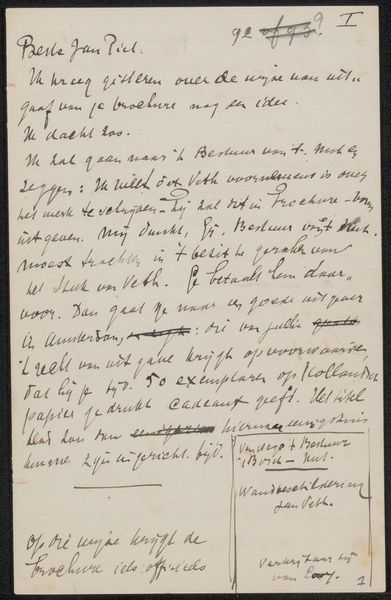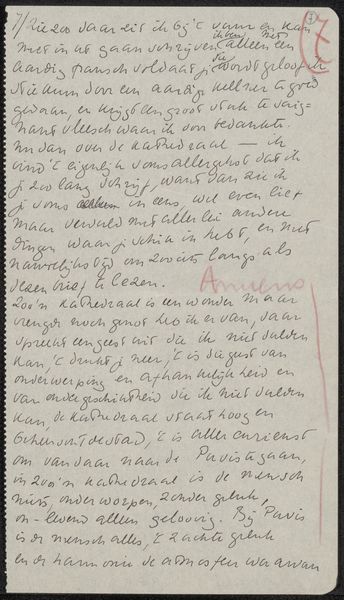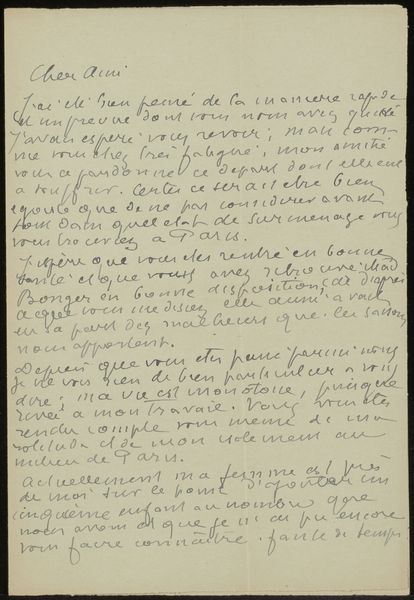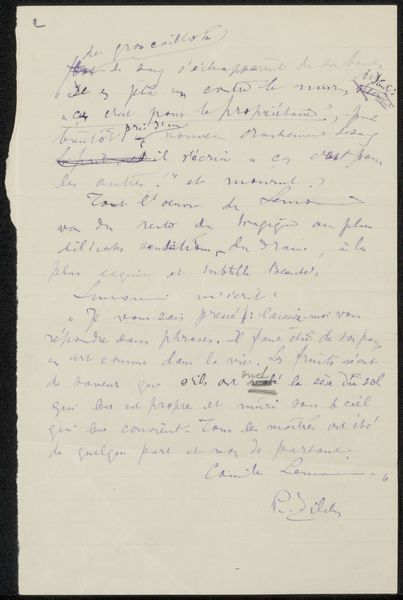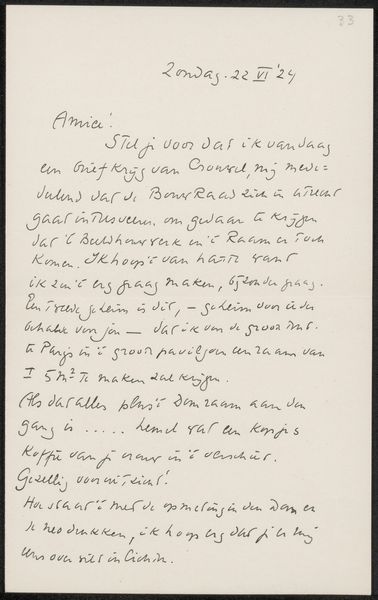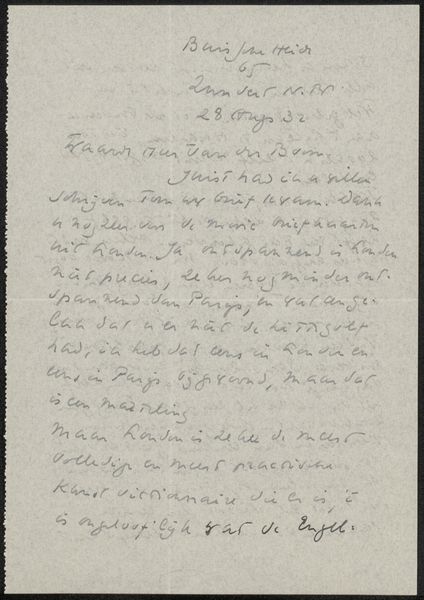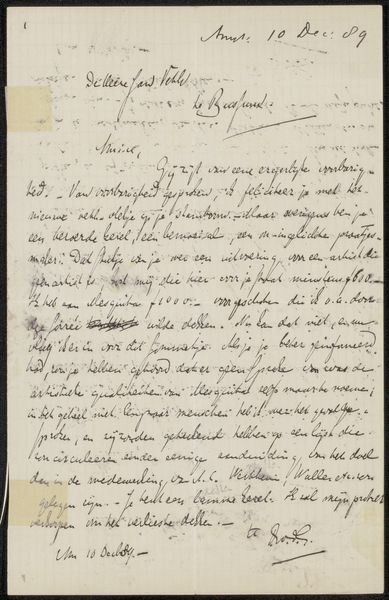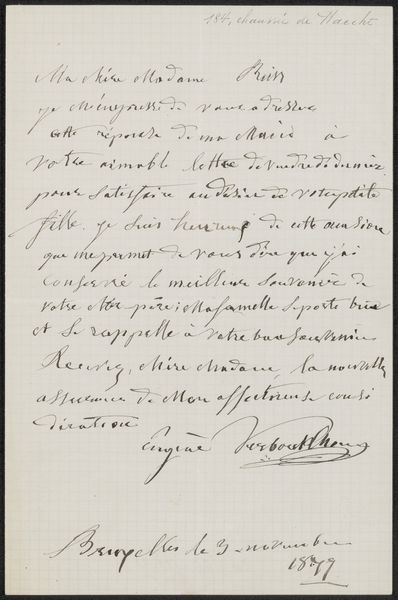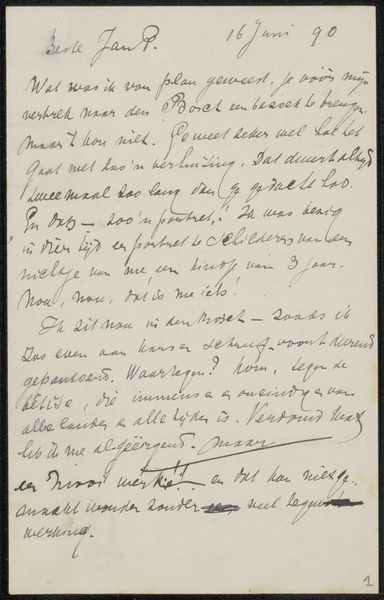
drawing, paper, ink
#
drawing
#
script typography
#
hand-lettering
#
text art
#
hand drawn type
#
feminine typography
#
hand lettering
#
paper
#
word art
#
ink
#
hand-drawn typeface
#
thick font
#
handwritten font
#
calligraphy
Copyright: Rijks Museum: Open Domain
Curator: This drawing, "Brief aan Willem Bogtman" from 1923 by Richard Nicolaüs Roland Holst, immediately calls attention to the labor involved. Look at the density of the ink, the precision required for each stroke of the pen. It transforms a mundane item, a letter, into a crafted object. What strikes you about it? Editor: Well, besides the beautiful script, it’s interesting to consider a letter as art. It makes you think about the writing process in a totally different way. Is there something particular about the time period that made a letter like this seem valuable? Curator: Absolutely. Early 20th-century Dutch culture valued craftsmanship, but was increasingly experiencing anxieties around industrialization. Roland Holst’s choice of the handwritten over the printed, in this context, makes a powerful statement. He is rejecting the efficient, impersonal nature of mass production in favor of something unique and inherently human. What is the “material” of a letter, beyond the paper and ink? Editor: I suppose the time it takes to craft. It takes effort to write. And what about the social element, its reception? The communication is not just for him, but also the recipient and society, right? Curator: Exactly. It points to the social relations of production. The letter itself is a commodity being circulated, carrying ideas and fostering a relationship. To see that labor made visible, to recognize that the ‘text’ is inextricably bound to ‘textile’ challenges divisions within art. Now, knowing all of that, does that change how you approach this letter, its context? Editor: Yes, it definitely shifts my perspective. It makes me wonder about all the unseen labor behind everyday objects and how artistic choices can highlight those processes. Thinking about materiality really expands the work's possible meanings! Curator: Precisely. And hopefully, makes us think differently about the world around us, seeing value and meaning in the things we often take for granted.
Comments
No comments
Be the first to comment and join the conversation on the ultimate creative platform.


